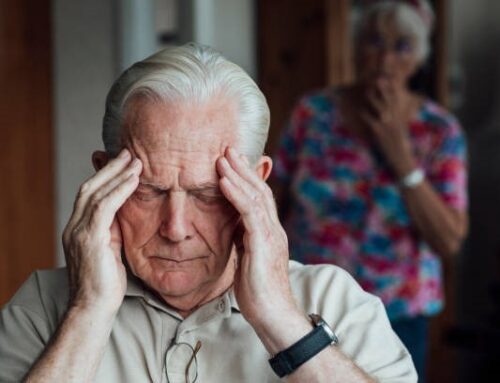Original article from Shape
We’re downloading meditation apps, taking boutique fitness classes, and analyzing our activity trackers—all in the name of wellness. But that’s just the beginning. Exciting, cutting-edge advances are taking place in key areas that are worth your attention. Get set to transform your body and mind, starting now.
 Wellness has a new expanded definition. It has moved beyond the body and now refers to holistic practices that help you feel good, stress less, and connect to others, says Beth McGroarty, the VP of research for the Global Wellness Institute. “That’s having a hugely positive effect on our health,” she says. “Look, we know what makes a healthy life: eating well, moving often, sleeping enough, and avoiding stress. But the medical community never found a way to make these things sexy. Wellness did.” Thus, happy hour is preceded by a Spinning class. A vacation, once devoted to sightseeing, is now an opportunity to optimize your body and mind. Being in bed by 9 p.m. with a detox tea has become worthier of an Instagram brag than a big night out.
Wellness has a new expanded definition. It has moved beyond the body and now refers to holistic practices that help you feel good, stress less, and connect to others, says Beth McGroarty, the VP of research for the Global Wellness Institute. “That’s having a hugely positive effect on our health,” she says. “Look, we know what makes a healthy life: eating well, moving often, sleeping enough, and avoiding stress. But the medical community never found a way to make these things sexy. Wellness did.” Thus, happy hour is preceded by a Spinning class. A vacation, once devoted to sightseeing, is now an opportunity to optimize your body and mind. Being in bed by 9 p.m. with a detox tea has become worthier of an Instagram brag than a big night out.
In fact, there’s so much innovation happening so fast that we felt the need to pause to take stock of what’s really worth your attention. After consulting experts at the forefront of the wellness movement, we came away red up about four categories that are experiencing truly groundbreaking advancements. This primer will walk you through the technology, classes, and lifestyle habits you can take advantage of right now and give you a few sneak peeks at what’s to come.
You Can Measure Your Genetics
In the last decade, many of us have gone from simply tracking our exercise to doing a deep dive into our genetic makeup via at-home tests like 23andMe. And in response, companies are increasingly finding ways to personalize our health routines. For example, the FoodMarble Aire ($159) lets you test your breath for hydrogen after eating, a sign that you may be intolerant to sugars like lactose or inulin in certain foods. The Aire fits in your pocket; previously, you had to go to a hospital or a clinic to get a similar test. Habit (from $199) offers an at-home test that claims to read how your body digests certain nutrients, helping you build a tailored diet. Be aware, though, that the tech behind these tests is still evolving, says Richard Carmona, M.D., the chief of health innovations at Canyon Ranch, an immersive wellness resort. Work with a doctor to interpret the results. (Related: 5 “Shape” Editors Took 23andMe DNA Tests and This Is What They Learned)
“Fringe” Therapies Show Real Promise
Even as we race to try out the newest therapies and gadgets, a key part of the wellness movement is also about re-exploring and reinventing centuries-old treatments, McGroarty says, pointing to “woo-woo wellness” like crystals, shamans, and energy healing. These semispiritual practices can feel a little out-there, but some scientists say they have legitimate bene ts because they activate what you could call the “faith” switch in the brain. “Research, especially around the placebo effect, shows that when people believe in something, they have better health outcomes,” McGroarty says. “Women right now seem intensely attracted to spiritual practices that turn on their belief switch.”
Some alternative treatments have real medical benefits too, research shows. Acupuncture has been proved to relieve pain, reduce inflammation, and help soothe allergies, for instance. Breath work is another promising therapy. It’s a type of breathing meditation, often practiced in a group setting, that helps you connect to your body and let go of stress and other negative emotions. Research now shows that it may boost immunity as well. (Related: Why You Should Try Acupuncture-Even If You Don’t Need Pain Relief)
There’s a New Culture of Calm
The rise of meditation studios, sensory-deprivation tanks, and detox baths-if there’s a dominant health message these days, it’s this: Prioritize rest. “Sleeping, disconnecting, and de-stressing have been historically undervalued but are now thankfully beginning to be appreciated as imperative to your well-being,” says Ashley Merrill, the founder of Lunya, a store that sells sleepwear in innovative designs and fabrics and also hosts wellness panels. The interest in restoration is largely due to the proliferation of mobile technology. “It’s no coincidence that the wellness industry has grown alongside the rise of the smartphone, which has fundamentally changed the way people work and connect,” McGroarty says. The modern workday is extended; it’s no longer a given that you’ll switch off just because you’ve gone home. So the methods you use to relax and unwind must evolve as well.
And they are. Sleep and stress are two of the hottest topics being researched right now. As scientists discover more about how our bodies and brains work, innovators use that information to create products that let us control our relaxation habits and maximize our rest.
Take the Dreem ($570), which uses experts’ learnings on how sounds affect sleep. The headband monitors your brainwaves and emits strategically timed tones to amplify the slow waves of deep sleep. (Related: The Best Sleep-Better Products to Finally Help Cure Your Insomnia)
Even airlines are hopping on the bandwagon. For instance, Japanese carrier ANA is creating a phone app aimed at relieving jet lag so travelers can leave the plane feeling awake and energized.
“We’re living longer, working longer than ever,” Merrill says. “If we don’t want to burn out by 50, it’s imperative that we learn to rest differently.”
Sexual Health Is Being Reimagined
The term women’s health used to evoke sterile doctors’ offices and awkward paper gowns. Not anymore. The latest feminine-health clinics are warmer and more inviting. Loom, in Los Angeles, provides health education, hosts classes, and offers one-on-one coaching-such as for same-sex couples trying to conceive and baby massage-all in a space that looks more like a chill meditation studio than an office. There’s also Parsley Health, a membership-based primary-care practice with locations in Los Angeles, New York, and San Francisco that provides information on women’s health and can help patients navigate complicated issues like hormonal imbalances in its relaxing settings. Trellis, a fertility studio in New York City that feels more like a living room than a doctor’s office, offers fertility assessments and egg freezing. (Related: Here’s How to Get Birth Control Delivered Right to Your Door)
These warm spaces feel especially fresh given that until now, female sexual health has been so medicalized, says Emily Nagoski, Ph.D., a sex educator and the author of Burnout. As more women become physicians, researchers, and product developers, feminine-health spaces have begun to be more inviting. “When designing an office that deals with fertility in particular, you want to make patients feel welcome-a medical office often feels dark and isolating,” says Anate Aelion Brauer, M.D., an assistant professor of obstetrics and gynecology at New York University School of Medicine. “Creating an environment that addresses a woman’s overall well-being, including her state of mind, also helps humanize clinical practices such as egg freezing.”



